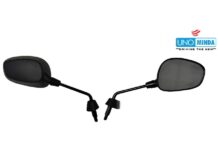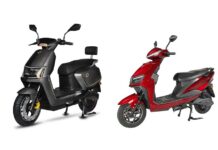
India’s intensifying monsoon season is accelerating vehicle corrosion due to moisture and poor drainage, threatening car longevity. While manufacturers add tech upgrades, structural protection is often overlooked. Zinc-coated steel, a proven rust defense widely used globally, remains underused in India.
This article delves into the overlooked impact of corrosion, the science behind zinc protection, and why it’s time for Indian consumers, manufacturers, and policymakers to prioritise galvanised steel as a non-negotiable standard in the fight against rust—especially in the age of climate extremes.
After a delayed start, the Indian monsoon has returned with unexpected intensity, bringing rainfall well above forecasted levels. In north-west India alone, precipitation has soared to 102% above the seasonal average. Cities are grappling with widespread flooding, mudslides, waterlogging, and stifling humidity. Amid this climate chaos, a silent yet serious threat emerges—the corrosive impact of moisture on one of a household’s most valuable assets: the car.
In urban environments with outdated drainage systems, vehicles are constantly exposed to stagnant water, airborne salinity and high humidity. These conditions provide ideal breeding grounds for vehicle corrosion. Rust is both progressive and destructive. If left untreated, it can compromise structural integrity, increase the cost of repairs, reduce resale value and jeopardise safety. In such environments, cars made from zinc-coated steel offer the most reliable, maintenance-free protection against long-term deterioration.
Steel constitutes more than 70% of a car’s structure, providing the strength essential for performance and protection. However, it is also highly prone to corrosion caused by moisture, coastal salt, pollutants and humidity levels above 80%. Conventional methods such as paint coatings or aftermarket rust-proofing offer only temporary surface protection and fail once the layer is damaged or wears away. In contrast, the use of zinc-coated steel during the factory assembly process ensures complete and uniform protection. Zinc chemically bonds with steel, forming a sacrificial layer that corrodes in place of the underlying metal. This means that even at scratches or dents, the steel remains shielded. The result is a self-sustaining, long-lasting solution, particularly effective in India’s demanding climate of high humidity and warm temperatures.
Despite the clear risks, most vehicles under 12 lakhs sold in India lack this essential protection. Although most of the automobile manufacturers have accepted the benefits of using zinc-coated steel panels at the body-in-white (BIW) stage, which refers to the production phase of the structural frame, its use remains limited. Ironically, all vehicles manufactured in India for export are fully galvanised to meet strict international standards. In contrast, leading automotive markets like Europe, North America, Japan and China see over 95% of vehicles using galvanised steel, backed by rust-perforation warranties of 10 years or more. Such warranties are virtually absent in India, as they require the vehicle’s structure to be zinc-galvanised, a standard still not widely adopted domestically.
This disparity reflects not only a lack of regulation but also a lack of consumer awareness and the influence that consumers can exert on purchasing decisions. Galvanisation is a decision taken at the manufacturing stage and cannot be retrofitted after the vehicle is assembled. Nevertheless, customers need to demand corrosion protection at the time of purchase.
Extensive field research has demonstrated the efficacy of corrosion protection provided by zinc. In a 2015 study conducted by the Indian Institute of Technology Bombay involving more than 500 vehicles in coastal Mumbai, 75% of non-galvanised cars exhibited visible corrosion within 5 years, while galvanised vehicles showed none. A similar 2017 analysis conducted in Chennai reported even faster corrosion rates among untreated vehicles due to the city’s saline and more humid environment.
The consequences of this disparity are already visible. Vehicles without galvanisation frequently exhibit signs of rust such as paint blisters, thinning panels and underbody corrosion damage within two or three monsoons. Car owners in coastal regions like Mumbai, Visakhapatnam and Chennai have reported severe deterioration within a few years of purchase. In contrast, car models using galvanised parts maintain both structural integrity and aesthetic value over years of use, without any maintenance costs and with much better resale outcomes.
Vehicles without galvanisation frequently exhibit signs of rust such as paint blisters, thinning panels and underbody corrosion damage within two or three monsoons. Car owners in coastal regions like Mumbai, Visakhapatnam and Chennai have reported severe deterioration within a few years of purchase. In contrast, car models using galvanised parts maintain both structural integrity and aesthetic value over years of use, without any maintenance costs and with much better resale outcomes.
Perhaps the most compelling fact is the cost-to-benefit ratio. The use of zinc-coated steel parts to assemble a vehicle adds less than 0.1% to its production cost but greatly enhances its longevity and value retention. It is a miniscule expenditure for the manufacturer and an invaluable assurance for the car owner.
As Indian consumers increasingly seek premium features such as panoramic sunroofs, digital infotainment systems, advanced driver-assistance systems and electric drivetrains, the structural integrity of the vehicle becomes even more crucial. No amount of technological advancement can compensate for the degradation of the car’s core structure. Without effective corrosion resistance, innovation is built upon an eroding foundation.
Finally, as India consolidates its position as a global automotive manufacturing hub, Indian car owners deserve the same quality and protection that international buyers receive. To bridge this gap, making the use of galvanised steel a mandatory standard is essential. A collective shift is required: from consumers demanding better quality, to manufacturers providing improved products, and policymakers standardising anti-corrosion norms. With the monsoon season unleashing relentless moisture and sea salt that accelerate corrosion, ensuring structural protection through the use of galvanised parts is no longer optional, but imperative to safeguard the longevity, safety and customer satisfaction of vehicles sold in India.









